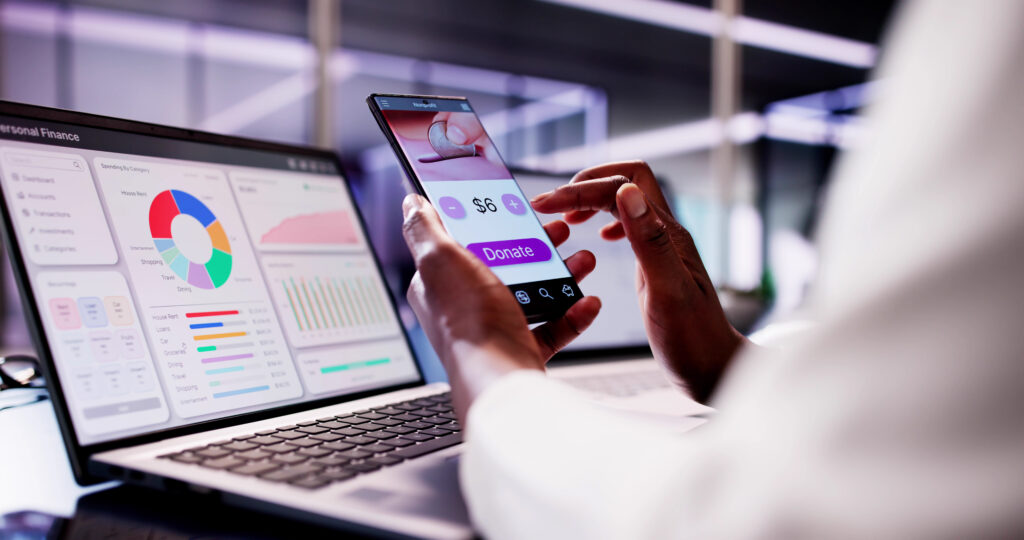3 Year-End Fundraising Metrics for Your Arts Organization to Reconsider
Search Results
Before you start planning your fundraising campaigns, it’s good to set goals that align with your organization’s key performance indicators (KPIs). The goals you’ve set may be as general as the amount of funds raised and the number of new donors acquired, but there are other baseline metrics worth watching. For year-end campaigns, those other metrics are usually about meeting budget projections. To help guide your fundraising goals, we’re going to deep dive into three of these nonprofit KPIs to be mindful of.
Getting Your Donors to Buy Into Your Giving Goals
While your arts organization inherently knows how important it is to meet your fundraising performance metrics, your job as a fundraiser is to match the desire of your donors to those goals. Therefore, begin with the end in mind: how much money do we need, for what, from whom? If it’s the end of your fiscal year, the number you’ll set as your fundraising goal will be based on the amount of funds you still need to reach your projections for charitable giving.
This number could also be broken down in other ways, like where those funds come from (e.g., grants, sponsorships, individual giving) and where they need to be applied (e.g., education programming, staff salaries, production expenses). Making donors aware of these specific needs and cultivating their interest in the ones that resonate with them will result in more gifts.

3 Key Metrics for Year-End Fundraising Campaigns
To maximize fundraising success, it’s crucial to gather key insights into your donors’ behavior. That way, organizations can tailor their strategies for more personalized and impactful donor engagement. While reaching your target fundraising amount is super important, here are three other fundraising KPIs to review along the way to help you get there:
1. Donor Retention Rates
How many donors give every year? How many gave last year but not this year? How many ticket buyers haven’t ever donated? These are some questions to consider as you plan your year-end fundraising initiatives. You’ll want to use some form of donor retention rate to segment your donors into groups based on how actively charitable they are to your organization. Here are the primary segments to include:
- Recurring Donors: These are donors who have given already this year and have also given a gift in the past 2-5 years. These are your most valuable and closest patrons and should be expecting to hear from you at this time of year.
- New Donors: These are donors who have given already this year, but haven’t given prior to this year. They represent new donors to your organization who are going to be asked for a second gift when they have already given one.
- Lapsed Donors: These are donors who gave at any point in the prior four years but not yet this year. They need to be reengaged and reminded of how much their gifts have helped you in the past.
- Non-Donors: These are ticket buyers who have come to your performances and exhibits but have never donated. While not normally counted in donor retention metrics, per se, this is a group that you are always trying to reach, and the holiday season is the perfect time for that.

We recommend looking at this fundraising metric for the past five years and putting each contact in your database into one of these four groups. It’s possible that you will find edge cases of donors who fit into more than one group or donors who require attention beyond this simple segmentation, but you can address those as needed.
Understanding the success rate you have with these will help you prepare for campaigns with measurable results. Pay particular attention to those who have given every year, including those who may have only started giving this year or last year, and review what they have in common. What have you done that has made those donors continue to give and hopefully increase over time? What made them donate in the first place?
Remember: for the recurring and new donors, your year-end giving campaigns will be asking for additional gifts above what patrons may have already given, either when renewing their subscription or membership, or when making an add-on donation during a single ticket purchase. These are the people who will contribute to the majority of your goal in the campaign, and they should receive the largest amount of personal attention.
2. Average Donation Amounts
Using the audience segmentation above, look at the average donation size for each group that has donated. For accounts in the recurring or new donor audiences, you should also look at the amount of their most recent donation. Additionally, be aware of any small “round-up-the-total” donations that may have come when purchasing tickets online. These amounts tend to be lower and can potentially skew your calculations. A good range is to only count gifts $25 and up towards a donor’s average gift amount.
By understanding what giving amounts are most comfortable for each segment, it will be easier to ask for a specific amount that gives you the best chance of earning another donation from them. What works best is if your donation ask reflects a small increase from their last gift. Try asking for a 15% increase over the amount they gave previously. Incorporating this information into your appeals will make them feel more personal to the donor, which results in a greater tendency to give.

3. Campaign Conversion Rates
From compelling emails to effective donation forms, the messaging of your year-end giving campaigns is everything. While it’s always helpful to have social media campaigns and prominently ask for donations throughout your website, end-of-year fundraising is most effective when conducted in a personal way. Think customized email messages, phone calls, handwritten notes, and holiday cards. The more personal, the better!
Once you’ve segmented your audience and have the information to incorporate in your appeals, you’ll want to create messaging for each segment that is personalized and measurable. Building and tracking your different campaigns for each segment will show you what’s working and hone your strategy as you go on. Before you even start your campaigns, consider what has worked best earlier this year and in the past. Do you get more donations from emails on weekdays or weekends? Do donations from text messages perform better than those from phone calls? Are the average gift amounts higher from phone calls or from direct mail? All of these can help inform the structure, frequency, and tone of your messaging.
While it’s very easy to track the amount raised by each segment, it’s even more valuable to the organization to learn which specific messages and tactics triggered the donation. Thankfully, all this data can be easily collected and analyzed with a powerful CRM! Using the model we’re working with here, you’ll then know not just who gave, but also when they gave and why. Particularly with email and text messaging, it’s easy to test and refine messages throughout the campaign, using what you learn to increase performance. Better still, what you learn this year from these nonprofit KPIs will become the baseline for your year-end campaign next year!

Master Year-End Fundraising with Leap Event Technology
‘Tis the season of giving and sharing gratitude to your donors! The end of the year offers tons of opportunities to engage with new and returning audiences, gain new donors, and shower thanks on those who have given over long periods of time. These key fundraising metrics will help you build an informed strategy to more effectively reach your target audience and raise more funds.
Looking for a helping hand with your fundraising efforts? As a system designed specifically for arts and culture organizations, Leap’s patron management solution helps hundreds of organizations raise millions of dollars each year in donations and ticket sales, and it helps the arts thrive in your community. With our solution by your side, it’s easier than ever to segment donors, personalize your year-end giving campaigns, and cultivate deeper patron relationships!




